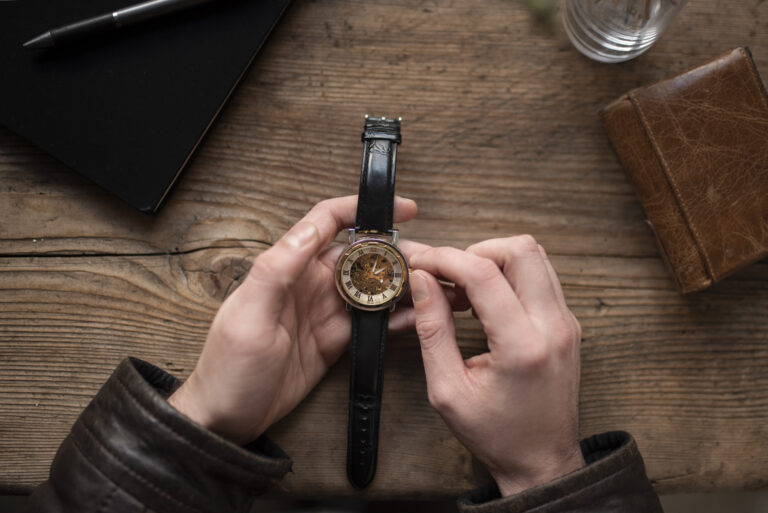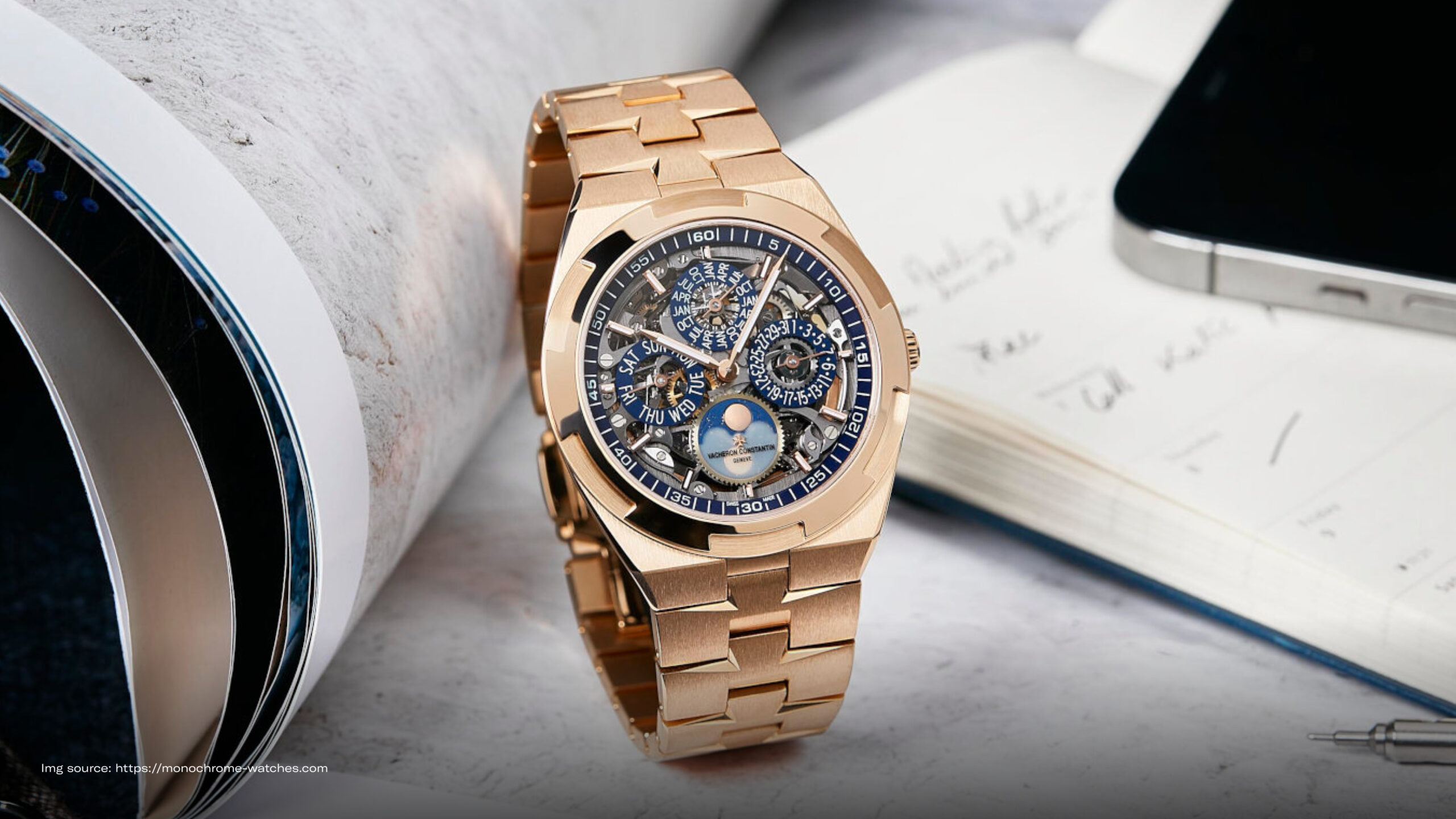What is a pilot watch? This type of watch is more than just a timekeeping device. A pilot watch is a specialized timepiece designed with aviators in mind, first emerging in the early 20th century to aid with aviation navigation.
Beyond their practical beginnings, pilot watches have grown into style icons admired far beyond aviation circles. If you’re interested in adding a pilot watch to your collection, read this article to get to know more about this unique timepiece.
Table of Contents
ToggleWhat Is a Pilot Watch?
Many people call a pilot watch an aviator watch. Unlike most types of watches, the origin of a pilot watch lies in necessity rather than fashion.
A pilot watch can be defined by a few signature traits, like a large, high-contrast dial that ensures superior legibility in all lighting conditions and a durable and robust build capable of withstanding the rigors of flight.
Also, this type of watch often has practical complications such as chronographs for precise timing or GMT functions for tracking multiple time zones.
The History of a Pilot Watch
The history of the pilot watch begins in the early 20th century, at the dawn of aviation. In 1904, Louis Cartier famously designed the Santos wristwatch for his friend Alberto Santos-Dumont, a pioneering Brazilian aviator who needed a practical alternative to pocket watches while flying.
This is widely regarded as the birth of the first true pilot’s watch, and notably, one of the first wristwatches ever made for men.
As aviation advanced through the 1920s and 1930s, so too did the pilot watch. Manufacturers such as Longines, Breitling, and Zenith began producing watches with large, luminous dials, oversized crowns, and precise movements to aid with navigation.
During World War II, the pilot watch became even more crucial, with the German Luftwaffe introducing the iconic “B-Uhr” (Beobachtungs-uhren), massive timepieces built for absolute accuracy and legibility.
Post-war, the pilot watch continued to evolve, incorporating features like chronographs, slide rule bezels, and later GMT functions for long-haul flights across multiple time zones.
Today, while modern pilots rely on digital instruments, the pilot watch remains an enduring symbol of aviation’s golden age — valued equally for its heritage, practicality, and timeless design.
Characteristics and Features of a Pilot Watch
Pilot watches were initially designed to meet the practical demands of aviation. Below are the key characteristics and features that define a pilot watch.
1. GMT function
As aviation expanded into long-distance travel, the need to track multiple time zones became increasingly important.
The GMT function, short for Greenwich Mean Time, was developed to address this. It allows the wearer to read two or more time zones simultaneously, a vital tool for pilots crossing continents and coordinating with airports worldwide.
Today, the GMT complication is not only practical but also highly valued by frequent travelers and collectors. It reflects the global nature of aviation and adds versatility to the pilot watch, making it just as relevant outside the cockpit as it is within it.
2. Luminosity
One of the most defining traits of a pilot watch is its luminosity. Early aviators needed to read the time in dimly lit cockpits, often during night flights, so clear visibility was essential.
As a result, pilot watches were equipped with luminous hands and markers that could glow in the dark, ensuring legibility under any lighting condition.
Modern pilot watches carry this tradition forward with advanced luminescent materials such as Super-LumiNova.
Unlike earlier radium-based paints, these materials are safe, long-lasting, and provide a strong glow after minimal light exposure. Luminosity remains a hallmark of the pilot watch, symbolizing its roots in practical aviation use.
3. Large dial
Pilot watches are also known for their oversized dials, designed to maximize readability at a glance. The large dial typically features high-contrast numerals and markers, often in bold white against a black background, to ensure quick recognition even in turbulent conditions.
This simple yet functional design makes it easy for pilots to focus on their instruments without straining their eyes.
4. Large crown
Equally important is the large crown, sometimes called an “onion crown”. Early aviators wore thick gloves during flight, which made adjusting a small crown difficult.
The oversized crown solved this problem, allowing for smooth winding or time-setting without needing to remove gloves. This feature, while less critical today, has become a signature element of the pilot watch aesthetic.
5. Rotating bezel
The rotating bezel is another functional element often found in pilot watches. This feature can be used to measure elapsed time, track fuel consumption, or assist with navigation calculations.
Some pilot watches, particularly those with slide-rule bezels like the Breitling Navitimer, became indispensable flight instruments before the advent of modern digital cockpits.
While many pilots now rely on advanced avionics, the rotating bezel continues to serve both practical and stylistic purposes.
Its tactile feel and technical look add to the watch’s aviation character, and enthusiasts appreciate the sense of heritage it brings to contemporary designs.
6. Chronograph function
The chronograph is a stopwatch feature built into many pilot watches. For aviators, this allowed precise measurement of flight times, maneuvers, or fuel intervals.
The sub-dials and pushers became more than just complications, they were tools for accuracy during critical moments in the air.
In modern times, the chronograph remains one of the most sought-after features in a pilot watch. Beyond aviation, it appeals to those who value mechanical complexity and the sporty, functional look it brings.
The chronograph stands as a testament to the pilot watch’s balance between utility and craftsmanship, ensuring it remains one of the most iconic complications in horology.
In the end, the pilot watch remains one of the most iconic timepieces in horology, combining history, function, and timeless design.
If you’ve ever wondered what a pilot watch is, it is ultimately a blend of practicality and heritage, making it a must-have for anyone who values both style and substance.
And if you’re looking for any luxury watches, like unique watches to add to your collection, visit Luxehouze.
Luxehouze has a wide collection of luxury watches from diverse brands for diverse types of timepieces, all guaranteed to be 100% authentic and come at the best price. Visit Luxehouze today!














